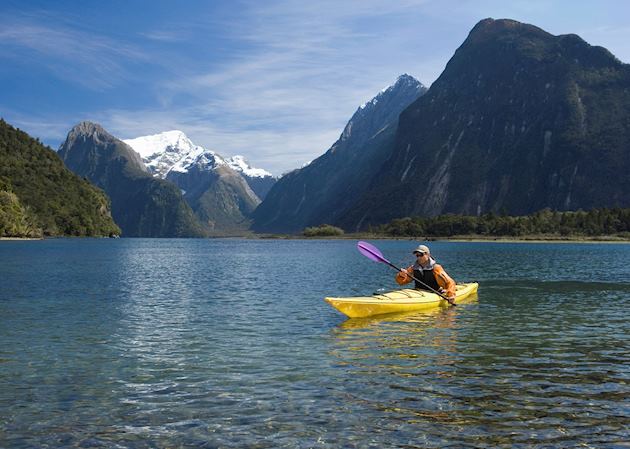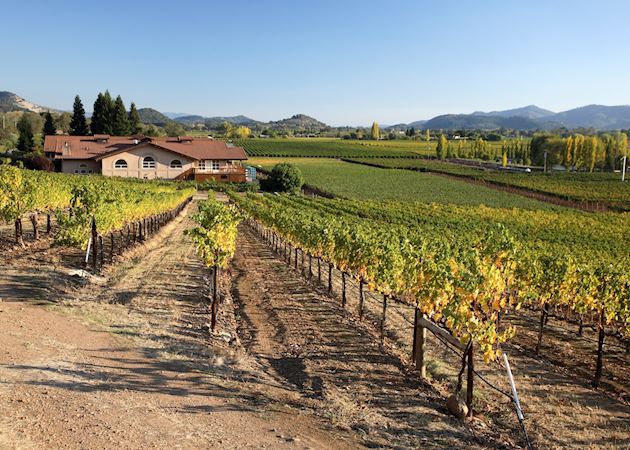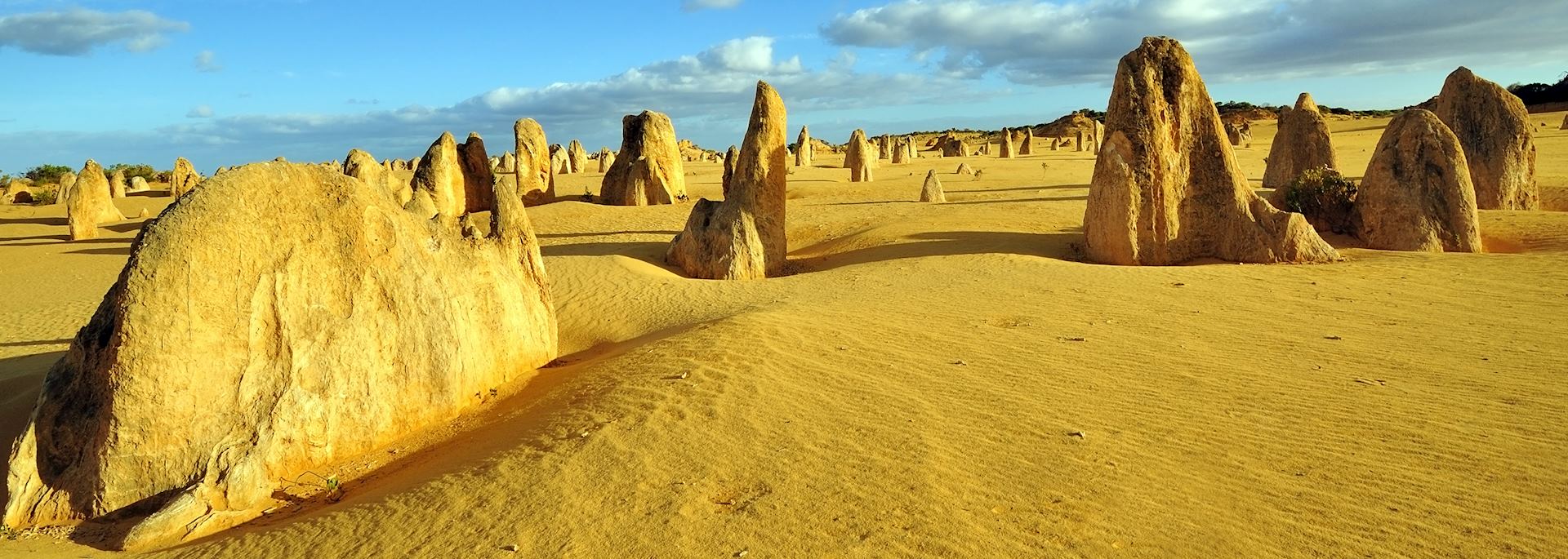
Getting off the beaten path in Western Australia
With Lee, Australia specialist
If you’re looking for a trip that’s well away from the crowds, where you can luxuriate in wilderness without sacrificing creature comforts, we suggest Western Australia. Australia specialist Lee is just back from the region and she shares why the quiet shores and wild landscapes of Western Australia are ideal if this is what you’re looking for. We sat down with Lee to find out what she loves about the area and why its wilderness, up-close-and-personal wildlife encounters, and empty beaches are all drawing visitors seeking untouched nature.
Have you noticed that people are looking for a different sort of travel experience post-Covid?
Definitely! There’s more of demand for isolation, lack of crowds, and off-the-beaten-track itineraries that are rich in nature and wildlife experiences.
How does a trip to Western Australia tick these boxes?
Western Australia is accessible wilderness. It’s not overly developed — there’s enough infrastructure that you’ll always find what you need, but there’s welcome solitude as well. You’ll drive on long stretches of highway without seeing another car and walk on untouched beaches that you have all to yourself. It might not have the same luxury edge of destinations along Australia’s east coast, but I think that’s a good thing. Western Australia is wild and authentic.
The area is especially popular among second and third-time visitors to Australia, though I’m getting quite a few requests from first-time visitors as well. A trip here gives you the chance to do something ambitious, like a 2,400 km (1,500 mile) road trip along the Coral Coast. Even just stopping off the side of road and seeing termite mounds — many taller than a man — backed by red hills, it’s an otherworldly landscape.
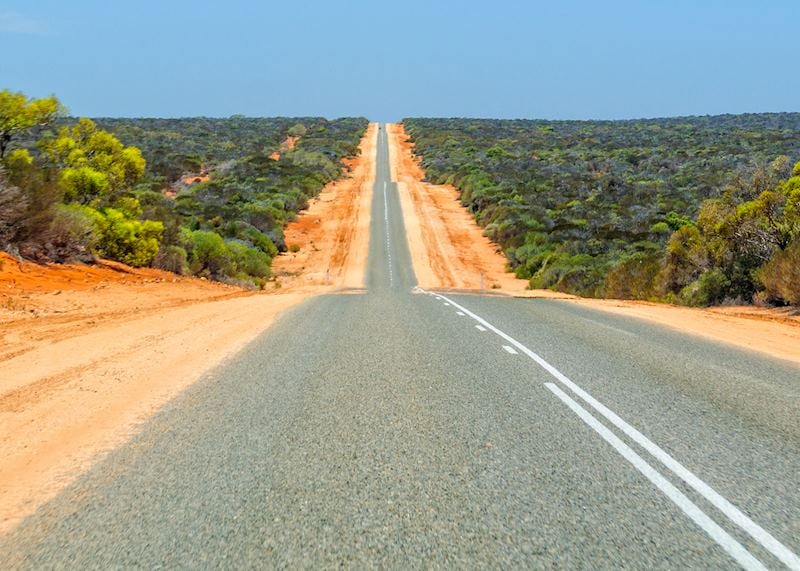
What might a road trip along the Coral Coast entail?
It’s a true-blue Aussie experience with open roads and big skies. In the UK, we can’t drive anywhere without traffic, so the idea of a long, straight road stretching out toward the horizon is really appealing.
It’s all drivable roads — you don’t need four-wheel drive to get around — so it’s easy for anyone to do. If you want to experience parts of Western Australia without driving the entire coastline, you can also fly from Perth to Exmouth and pick up a car there.
What will you see along the way?
You could pick up a car in Perth and make several stops along the Coral Coast which is a seven- to eight-day adventure. The journey starts off with a two-hour drive from Perth, arriving in the Pinnacles Desert of Nambung National Park, where jagged limestone formations rise directly up from Martian-red sands.
Further along the coast in Kalbarri, red rocks layered like a wedding cake run along the coastline. Inland in Kalbarri National Park, a deep gorge — like a miniature Grand Canyon — runs 80 km (49.7 miles) out to the sea.
The park is known for its sculptural rock formations, like the precariously perched and aptly named Nature’s Window, which frames a view of the emerald-hued Murchison River snaking through the gorge below. New boardwalks have been added to the park recently, and you can also walk out onto viewing platforms that float out over the canyons.
There are quite a few options if you’re going further north. Call in at Monkey Mia, in Shark Bay, where dolphins can be spotted in the shallows. In the mornings, there is a chance to see a select group of mature female dolphins fed by park rangers — an interaction that is carefully managed to ensure the dolphins continue to hunt and behave naturally.
For more water-based activities, Coral Bay is where Ningaloo Reef begins, with fringing coral expanded directly from the beach out into the water. The safari camp-style accommodation of Sal Salis Ningaloo Reef is an example of the barefoot luxury you’ll find on the Coral Coast. It’s totally remote and sustainable, with safari tents perched on dunes looking out over the water and the vibrant, fringing Ningaloo coral reef that skirts the shoreline. Then it’s up to Exmouth, a hub for scuba diving, wildlife spotting and deep-sea fishing, where anglers can reel in ruby snappers and blue marlin.
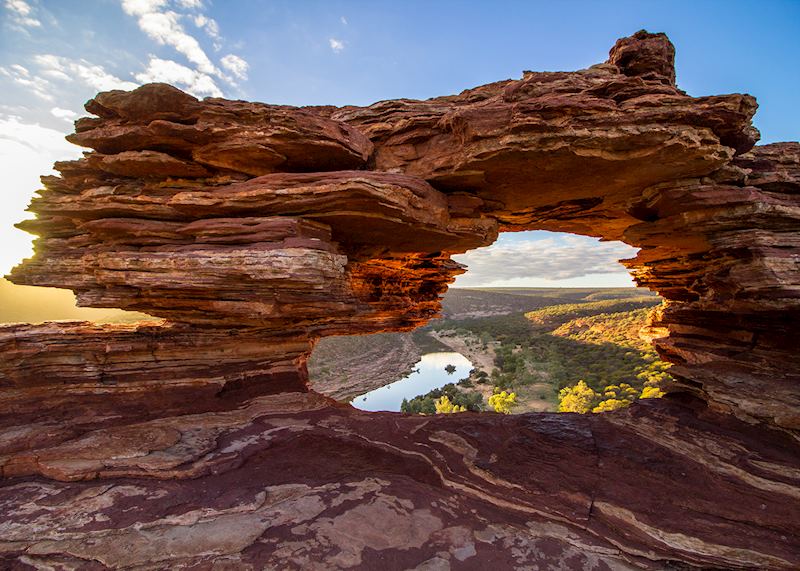
What are some of the places you like to go to for solitude in Western Australia?
Shell Beach, in the Shark Bay World Heritage Area, is amazing — the seemingly white sand is actually made up of billions of tiny cockle shells. You can enjoy true isolation, walking over never-ending hills of shells with no one else around.
Another memorable spot is the Hutt Lagoon, found just South of Kalbarri in Port Gregory. It’s known as the Pink Lake for good reason — a carotenoid-producing algae dyes the water different shades of pink, fluctuating between bright bubblegum and bold magenta, depending on the time of day or season. Get there at midday, when the sun streams down from overhead, to really appreciate the full spectrum.
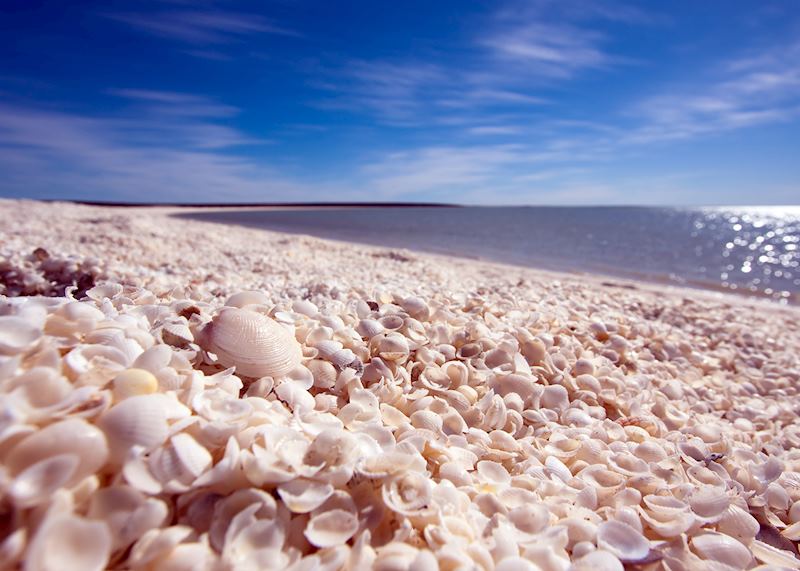

What’s a not-to-miss activity in Western Australia?
In Francois Peron National Park, you can take a four-wheel drive tour with an Indigenous guide to places that are only accessible by off-road vehicles and find yourself miles and miles from anyone else. I personally never get over that contrast of red desert, white sand, and blue sea.
The tour takes you to lookout points over sheltered bays where you can look for sleek manta rays gliding through the water and gentle dugongs lifting their bulbous snouts to the surface. The tour ends with a welcome soak in the steamy waters of the artesian hot tub at the Peron Homestead.
What wildlife can you experience in Western Australia?
Well, you can’t really talk about the west coast of Australia without mentioning whale sharks and humpback whales. Meanwhile, on land you can also expect to see emus, wallabies, echidnas, and a variety of birdlife.
You can swim with whale sharks at Ningaloo Reef from April to July, with a 97% success rate of finding them. A spotter plane works with the boat, looking for the tell-tale shadows of the enormous fish making their way through the water. Then you jump in and swim beside the whale sharks, with their massive size and white-spotted skin.
To swim with an even larger sea creature, some operators offer tours where you can interact with humpback whales during the season from June to October. Like the whale shark swims, these are very carefully regulated with limited operators licensed to offer it, rules around how close swimmers can get and how the animals are approached, and absolutely no touching to ensure they aren’t harassed or stressed.
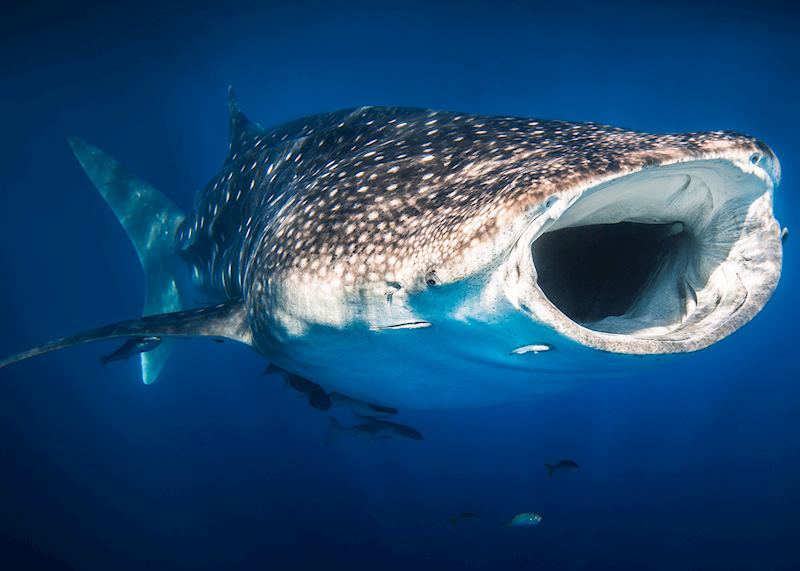
What else makes this part of Australia so special?
While the sense of wilderness is strong, the man-made places you’ll stop at along the way are clean and well-maintained. You can tell the locals take a real pride in Western Australia — people love living here. They are happy to have visitors and really want to show it off.
What advice would you give when booking a trip here?
The best time of year to visit the Coral Coast is between March up until the end of September. If you’re driving the coast, it’s important to consider how much you want to travel in a day and be aware of distances. This isn’t a destination for those who are in a rush. If you want to unwind into long, languid days, reconnect with nature, feel the world slow down, and really get away from distraction, then this is the place for you. If you are looking to travel October to February, then that’s the best time to visit Western Australia’s southwest region, which is a whole other adventure!
Get me there: You can use our Western Australia’s Coral Coast trip idea as inspiration for your own self-drive trip.
Was this useful?

